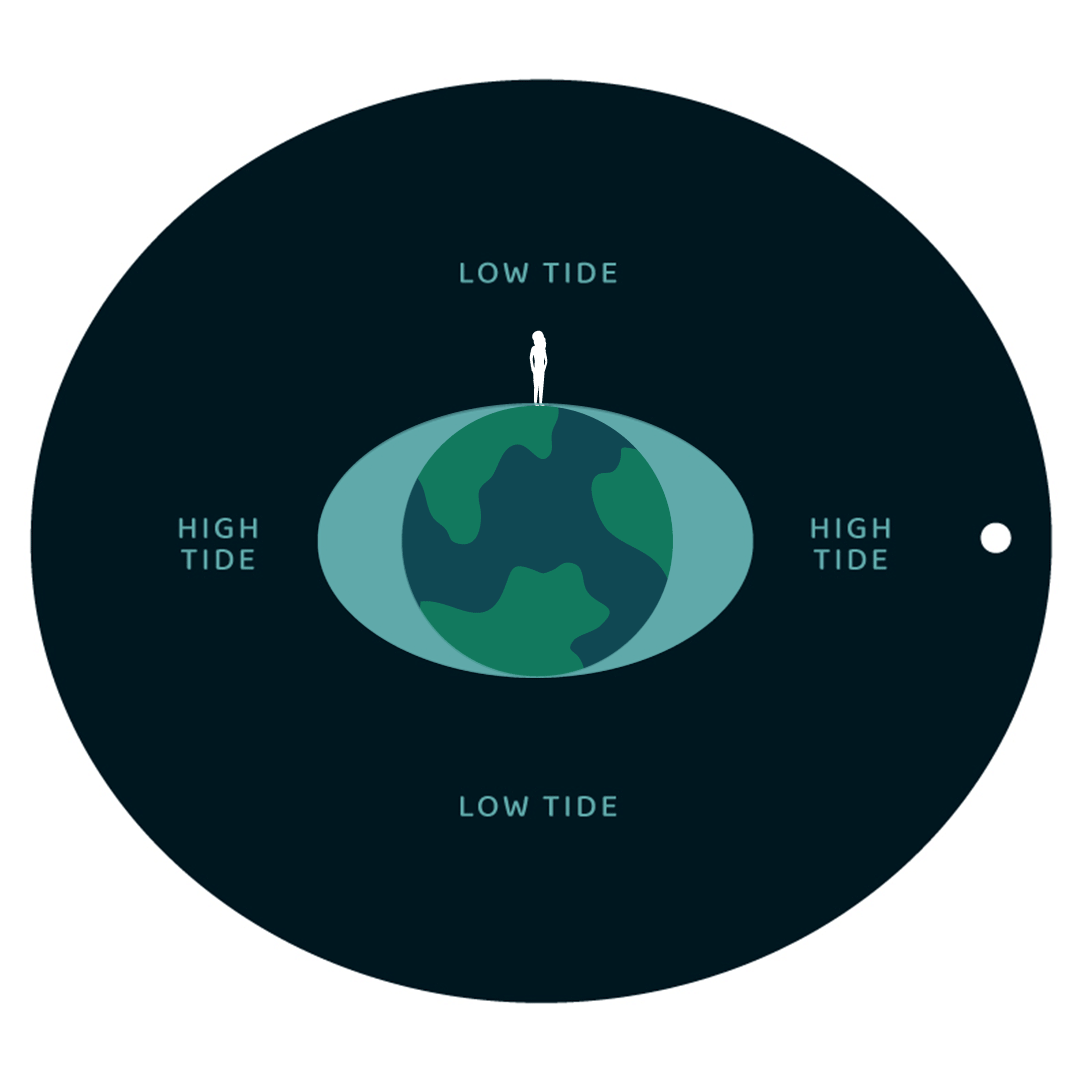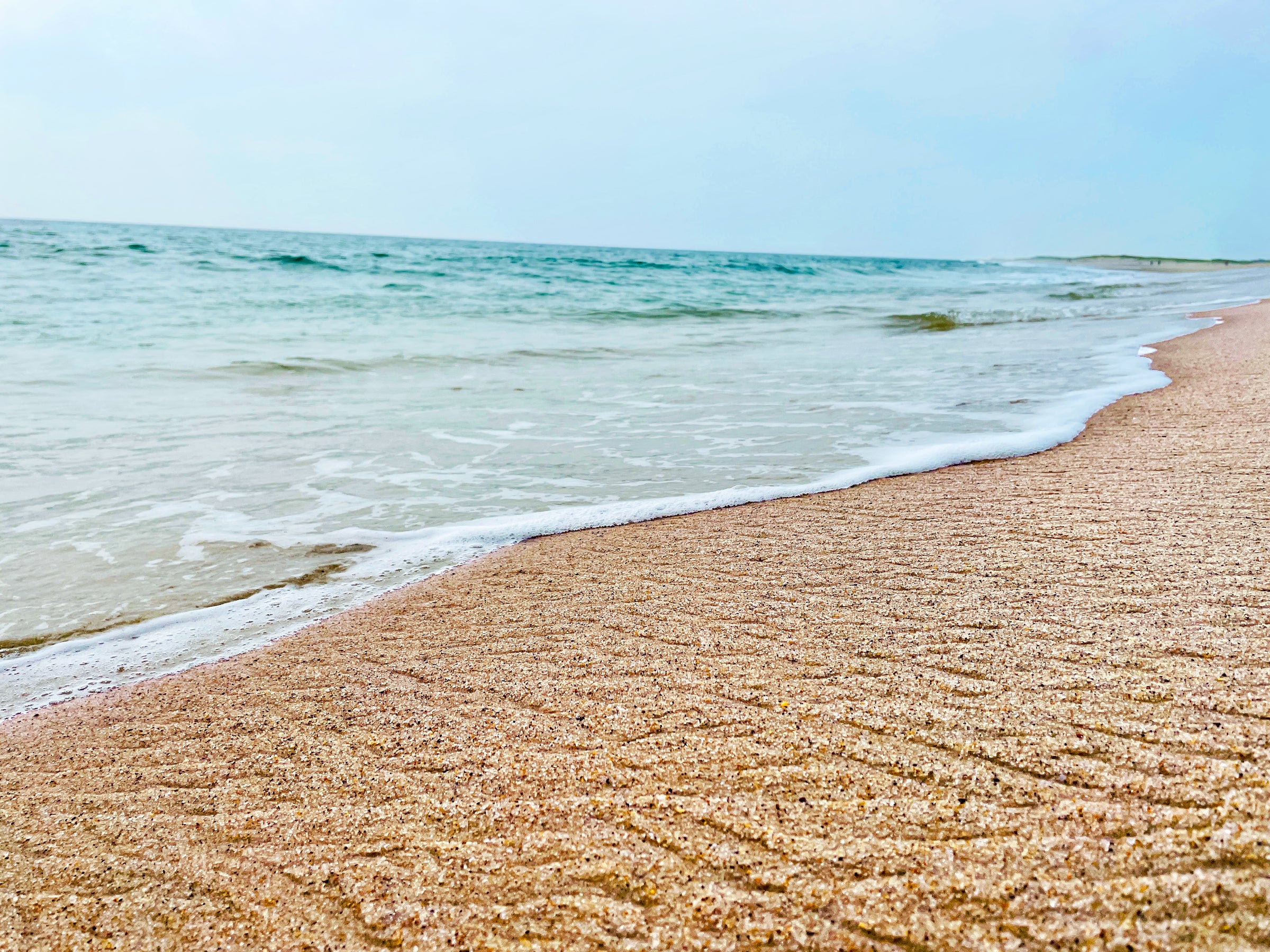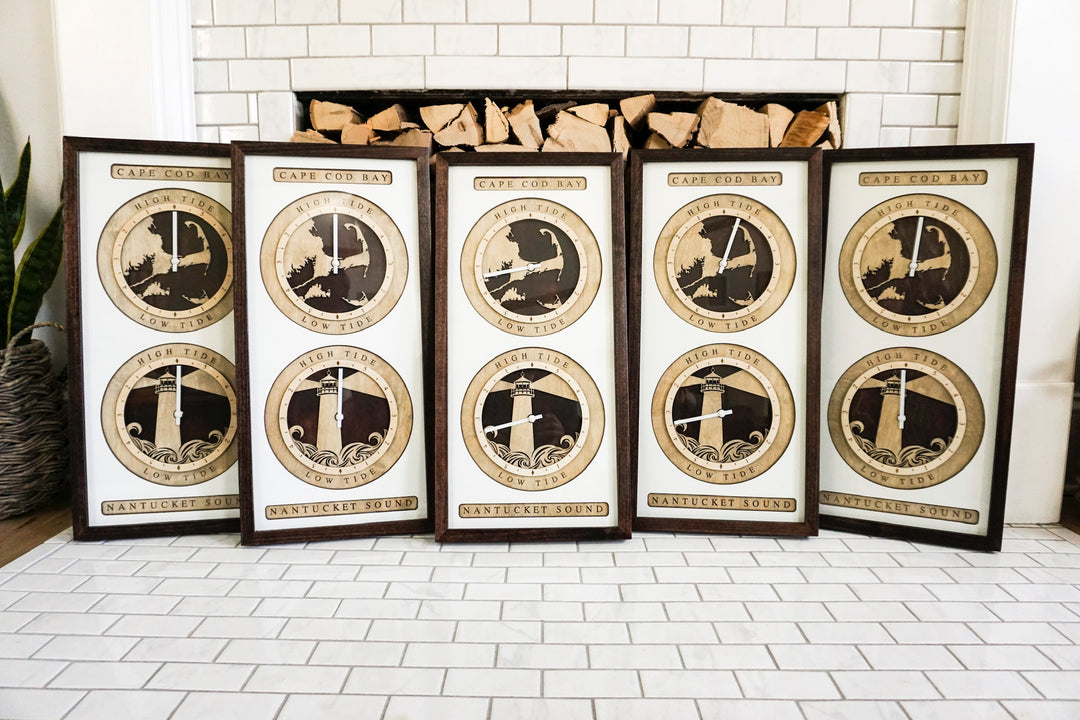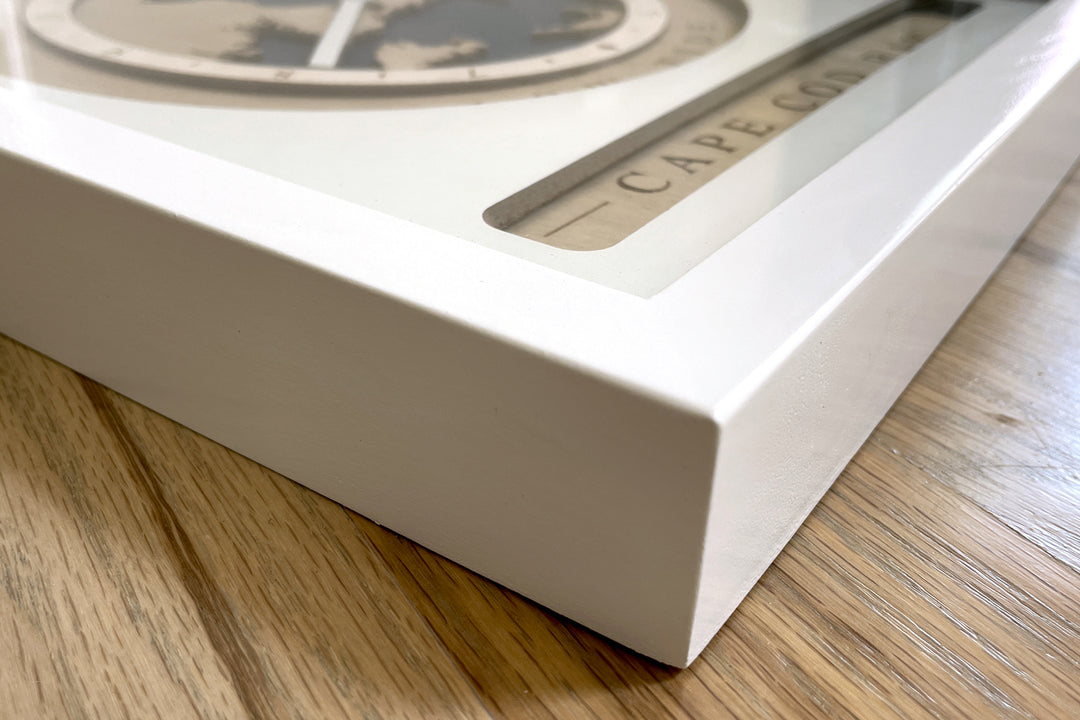What is a Tide Clock?
To understand what a tide clock is, we must first understand what tides are. Tides are the rise and fall of the sea level along the shoreline. Many coastlines have two standard high and low tides in a 24-hour period. Tides are caused by gravitational forces from the moon and sun exerted on the earth.
A tide clock is a device that indicates the approximate time of a high or a low tide. Knowing when a tide will be high or low can be helpful for many ocean lovers and maritime related activities.

Gravitational forces create tidal bulges
How does a tide clock work?
Tide clocks are similar to time clocks with high tide marked at 12 o’clock and low tide at 6 o’clock. The difference between a tide clock and time clock is the time it takes to make one full rotation. Tide clocks are set to make one full rotation approximately 12 hours and 25 minutes. (One half of a lunar day, which is 24 hours and 50 minutes.) This is the average time that passes from one high tide to the next high tide, due to the gravitational pull from the moon.
Tide clocks are meant to give you a reliable estimate, but not an exact tide time. It is recommended to adjust your clock only twice a year, after equinox periods. Tides may experience variations due to your specific location and weather conditions. It is not recommended to reset your clock due to any of those factors as the tides will return to their normal cycle. Learn how to set your tide clock here.
How do you read a Tide Clock?
When the hand is on the 5, to the right of HIGH TIDE, that indicates the next low tide is approximately 5 hours away. As the hand passes LOW TIDE, the numbers on the left following LOW TIDE indicate how many hours until the next high tide.

5 Hours until low tide
WHAT IS A MOON PHASE CLOCK?
A moon phase or lunar clock is a device that tracks the lunar month and each phase the moon goes through during said month.
WHAT IS A LUNAR MONTH?
A lunar month is a measure between successive new moons. Essentially, a lunar month is the time it takes for the moon to rotate around the earth, which is approximately 29.53 days. A lunar clock mechanism is set to a 29.53 day rotation so it only moves slightly each day to follow the lunar
month.
WHAT ARE MOON PHASES?
Moon phases are different shapes of the moon we see as the moon rotates around the earth. The sun always illuminates half of the moon and the amount of what we can see illuminated depends on where the moon is in its orbit, also known as moon phases. Moon phases consist of a New Moon, Waxing Cresent, First Quarter, Waxing Gibbous, Full Moon, Waning Gibbous, Last Quarter and Waning Cresent.
HOW DOES A LUNAR CLOCK WORK?
A lunar clock mechanism makes one full rotation in 29.53 days. New moon being at the standard 12 o’clock placement and full moon being at the standard 6 o’clock placement. The clock hand moves slightly each day to follow the lunar month, indicating each phase the moon is in. Learn how to set your moon phase clocks here.
HOW ARE TIDES AND THE MOON CONNECTED?
As mentioned, tides are caused by the gravitational forces from the moon. The cool part about tides and moon phases are that as we go through a lunar month our tides are impacted at certain moon phases. During a new and full moon, tides have larger tidal ranges, as known as spring tides. This means high tides will have higher water levels and low tides will have lower water levels than normal. During first and last quarter moons, tides have lower tidal ranges, also known as neap tides. This means high tides will have lower than normal tides and low tides will have higher than normal levels.





